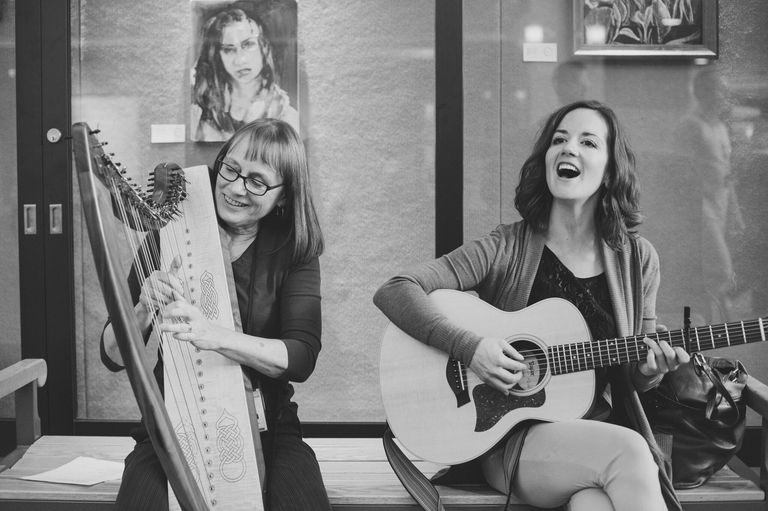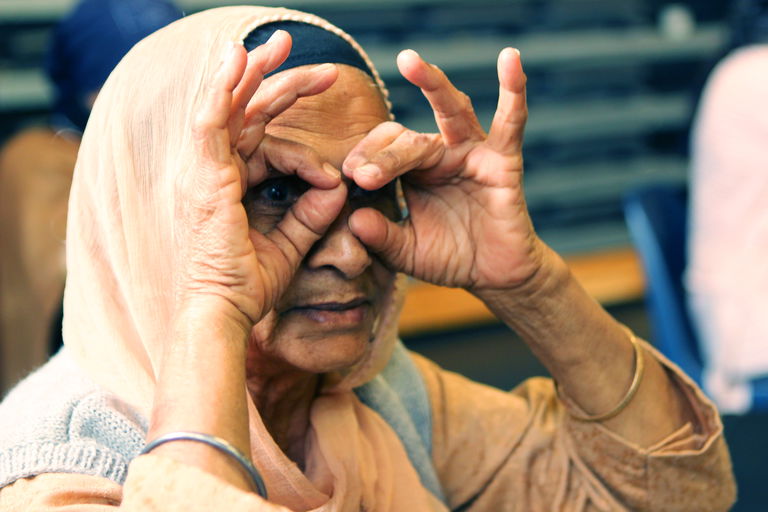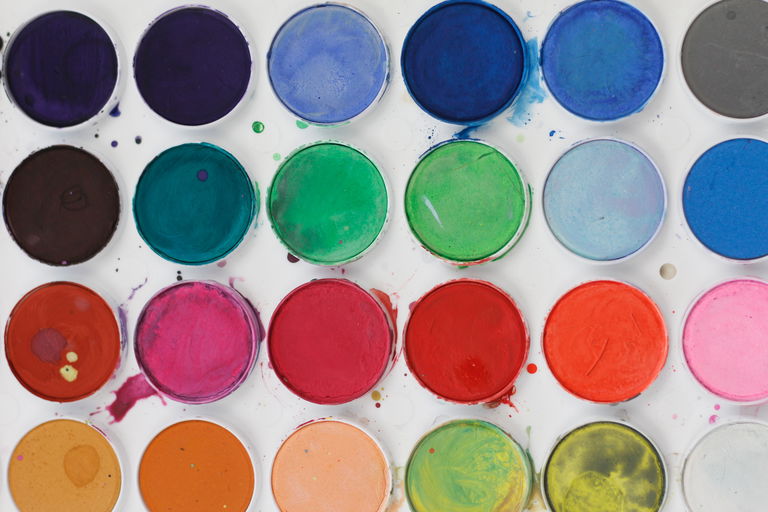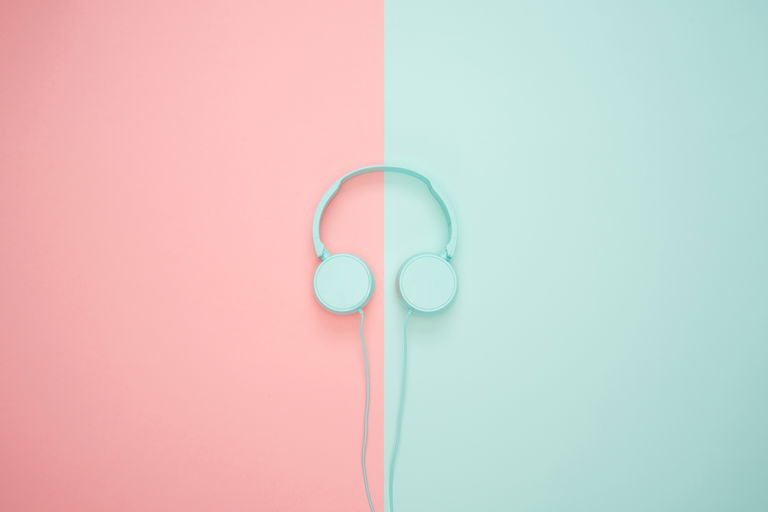
When Art is the Best Medicine
Leah Sandals
Feb 5, 2019
Imagine being sung to before surgery. Picture weavings in a medical procedure room. Visualize a painter’s canvas and palette next to a hospital bed. In different parts of Canada, these imaginings—and more—are reality. From coast to coast, links are growing between arts and medicine.
Last year, Memorial University Medical School in St. John’s launched an art gallery, and Toronto’s Royal Ontario Museum offered free visits to community health centre patients. In 2017–2018, the Artists in Healthcare program at Manitoba’s St. Boniface Hospital helped 19,000 patients. And in 2017, Interior Health in BC kicked off an art project on breastfeeding and maternal health that reached more than a dozen communities, including hands-on workshops with professional artists.
Research is also showing the value of expanding arts and wellness programs. A study released in November 2018 by the Montreal Jewish Hospital, the McGill Centre of Excellence on Longevity and the Montreal Museum of Fine Arts showed that participation in cultural activities such as painting or drawing not only improves well-being and quality of life in the health of some people aged 65 or over, but also enhances their health. A University of Waterloo study released in December 2018 found that drawing enhanced memory retention in older adults more than writing or other study techniques—a finding its authors think could be applied to help people with dementia. Reflecting a wider acceptance of arts’ importance in medicine, the Canadian Medical Association Journal, in June 2018, published Encounters, a book of prose and poetry aiming to illuminate the more emotional, creative side of medical practice and patient experience.

The Healing Arts Program at St. Paul’s Hospital in Saskatoon has a drop-in art studio for visitors, patients and the public. There’s also an artist-in-residence, writer-in-residence, and musician-in-residence. These practitioners visit patients on wards and offer community outreach beyond the walls of the hospital, which is situated among vulnerable inner-city populations.
“The relationship is the foundation” of the healing there, says St. Paul’s artist in residence and program co-creator Marlessa Wesolowski. “It could be a five-minute relationship or one built over many years. We have a dialysis unit, so there are people who come in the studio many times. But it could be at bedside, it could be in a hallway, it could be in a family waiting area with a mobile studio, too.”
Writer in residence Kristine Scarrow says her health has benefited from the arts, and she tries to pay that forward at St. Paul’s.
“Besides the psychological benefits, there are real medical health markers: lower blood pressure, lower heart rate, lower levels of pain reported,” says Scarrow via email. “Engaging in the arts, in any fashion, can lessen symptoms, alleviate psychological distress, arm the participant with tools and resources, and build resilience.”

The Artists on the Wards program at University of Alberta Hospital and Mazankowski Heart Institute in Edmonton has been going strong for 20 years. The in-hospital McMullen Gallery also opened in the 1980s. Now, in the 21st century, those arts programs continue to grow.
“There’s a lot of different organizations around Edmonton that deal with arts and health,” says Tyler Sherard, Executive Director, Friends of University Hospitals. Momentum continues to build in the city: “In November, Mayor Don Iveson even declared the first Arts and Health Month.”
The Artists on the Wards Program is multidisciplinary: visual, literary, musical, dance, theatre and even clown artists have made an impact.
“One of the unofficial mottos of the program is that we aren’t focused on what’s wrong with the patient—we’re focused on what’s right with the patient,” says Sherard. “We have patients say, when they’re participating in a workshop or an activity, that they’re reminded they’re so much more than just their diagnosis.”
The Artists on the Wards Program operates by referral, but it’s not limited to a therapy model. And the hospital’s art collection doesn’t just rest in its gallery; hundreds of its paintings, prints and drawings are spread throughout wards and buildings.
“With visual artists, we might do a hands-on activity, looking at how to paint a certain thing. But other times, it could just be responding to a patient’s request to make a drawing of their dog,” Sherard explains. “Musicians might bring an instrument for people to play along with—and then other times they might help a patient fall asleep better by playing songs from their childhood as they rest.”
The healing power of art is also being centred at leading museums. This fall, the Montreal Museum of Fine Arts gained international acclaim when it announced a pilot that would permit physicians to write patient prescriptions for free visits.
“We have the unique opportunity to use the museum’s collection as a jumping off point,” says Stephen Legari, Educational Programmes Officer, Art Therapy, at the Montreal Museum of Fine Arts. “A group of adults with certain problems might find art that can help them communicate that problem, or help them sort out part of that problem.”

One of the groups the Montreal Museum of Fine Arts works with is the Centre de Services de Justice Réparatrice. In a recent session on boundaries and transitions, the group looked at John Everett Millais’ St Martin’s Summer (1878) and John MacWhirter’s The Valley of Slaughter, Skye (1876).
“Art can generate a sense of identification,” says Legari. “In such sessions, we can deepen that and have a reflective component where people are invited to speak about their own experiences and hopefully get some measure of benefit. It’s not that there is a specific kind of response that we are looking at eliciting—people are welcome to not like the art and state reasons why—but what we are hoping it will elicit some personal reflection.”
The Montreal Museum of Fine Arts also has a drop-in art therapy studio, as well as programs custom-designed for specific organizations, including Ruban Rose, Autisme Sans Limite, the Douglas Institute Eating Disorders Program, and the Centre for Excellence on Partnership with Patients and the Public. The museum has also tailored programs for children with developmental disabilities, adults with Alzheimer’s, and more.
“We’re looking to offer participants a feeling that they belong, that they can express themselves, and that they find a place here,” says Legari. “Cultural activities have the possibility to invite you out of your habitual sphere—someone can have a rich family life can still feel isolated because they are the only ill person in their family.”
What’s next for these and other art and health programs in Canada? More exploration, experimentation and empowerment.
“We need to be supporting this work and expanding programming,” states writer Kristine Scarrow of St. Paul’s. Adds her colleague, artist Marlessa Wesolowski: “The arts allow space for patients to share their story in any form—so then they can develop more ability to advocate for themselves.”
This is the first instalment in a special blog series by Leah Sandals, which examines Culture Days’ 2019 theme of Creativity, the Arts, and Well-being. Read the rest:





